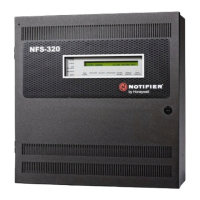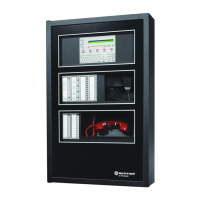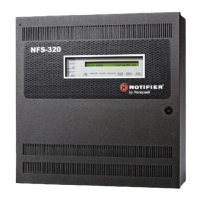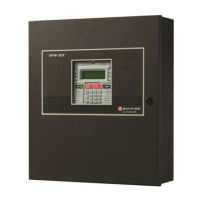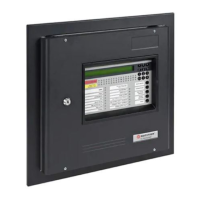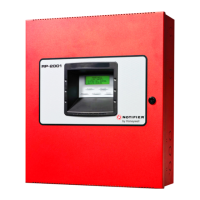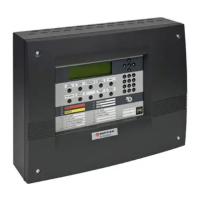26 NFS2-3030 Listing Document — P/N LS10006-051NF-E:F2 5/19/2022
• Manual release /abort switch interaction
– Activation of a Manual Release Switch will override Pre-discharge Delay and override an active Abort Release Switch, resulting in an
immediate agent release.
• NAC Reactivation (NAC support provided by the FCPS-24S6/S8 or the ACPS-610)
• Primary power source failure indication
• DAC Communication Format
–SIA
– Contact ID
– 4 + 2 Standard
–4 + 1
–3 + 1
– 4 + 1 Ademco Express
– 4 + 2 Ademco Express
• Interconnected control panels
– Alarm, supervisory, and trouble conditions, as well as reset, alarm silence, or trouble silence actuation originating at this panel are annunciated
at this panel. All interconnected panels must also connect to a network annunciator to display these conditions.
•Walk test
• Integrated/network local functionality
• Circuit disables
• Mapping
• Detection/alarm algorithms
• Day/night sensitivity
• Detection sensitivity adjustment
• Mass Notification
• Extent/limitations of combination system
– Priority of signals
• Canadian Applications
– Standalone Applications:
• CPU2-3030D, with its integral keypad/display, meets Canadian requirements for standalone applications.
• Two-Stage Systems (3/5 minute timer) - An ACM-24AT control point is required for Automatic Alarm Signal Cancel. Acknowledge will
not cancel the Two-Stage timer. See the ACPS-610 Manual for additional programming information.
– Network Applications:
• The network’s Manual Controls may only be operated from one location at any given time. When panels are networked (using NCM
Network Communications Modules or High-Speed Network Communications Modules), use AKS-1B Key Switch on each panel’s Primary
Annunciator to enable its functions. NCA-2(NCA-2C for Canada Only) may be a Primary Annunciator when AKS-1B is installed.
• The NCA-2 (NCA-2C for Canada Only) , or ONYXWorks may be employed as a Display and Control Center (DCC). In the event that
communication fails between the panels and the Control Center, the panels will continue to function in local/standalone mode.
If the DCC option is enabled on the NFS2-3030:
An ACS control point mapped to the local Special Function zone ZF36 is required.
An ACS monitor point mapped to ZF36 for each DCC and node that has DCC enabled on the network is required.
• Automatic Alarm Signal Silence:
– For a system requiring annunciators, consult the Authority Having Jurisdiction.
• Auto Silence- If auto silence is enabled:
– The value must be set to 20 minutes
– An ACS point is required to monitor special function zone ZF40 for Auto Silence
Activation of Auto Silence will activate the Signal Silence LED on the fire panel display and any ACM LED point programmed for Auto
Silence.
• Annunciator Applications:
– ACM series annunciator modules must be used to annunciate the fire alarm input points/zones only, if no multi-line sequential display is
installed.
– The following LED colors must be employed:
• Red must be used to indicate active alarm inputs.
• Yellow must be used to indicate supervisory, burglary, trouble signals, and Automatic Alarm Signal Cancel.
• Green must be used to indicate the presence of power or an activated output.
– The ACM point designated for Automatic Alarm Signal Cancel should be labeled as “Automatic Alarm Signal Cancel” or “Auto Alm Signal
Cancel”.
• Ancillary Devices:
– For Canadian applications, if the DCC option is disabled (subject to AHJ approval), Acknowledge, Signal Silence, and System Reset will
function as stated.
• Releasing Devices:
– Supervision for shorts is required; use REL devices and type code R
EL CKT ULC. (With FCM-1 modules use REL-47K.)

